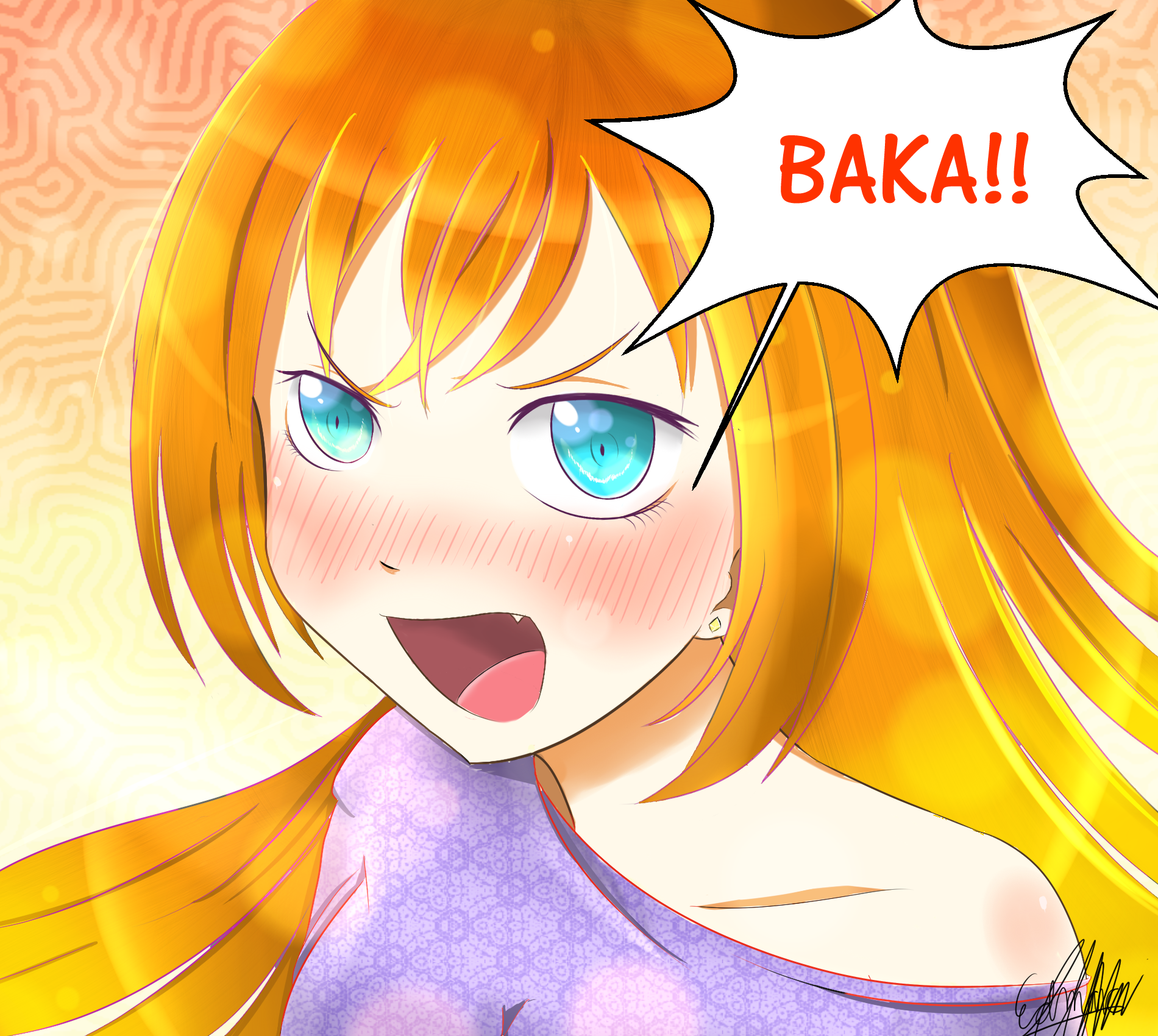-Dere
Part of a series on Moe. [View Related Entries]
[View Related Sub-entries]
This entry contains content that may be considered sensitive to some viewers.

About
-Dere is a slang suffix originating from the Japanese word "deredere" (or "lovestruck" in English), which is used by manga and anime fans to describe a range of popular character traits or attitudes often attributed to female characters.[1] A popular neologism closely associated with the concept of moe in Otaku subculture, its four most well-known subcategories include Tsundere, Yandere, Kuudere and Dandere.
Origin
Tsundere
The term "tsundere" is said to describe a character who is generally cold, hateful and angry towards their love interest, often denying their feelings when confronted about the subject. As the story progresses, the character usually becomes more open about their feeling and will eventually confess to their love interest. Tsundere is a portmanteau of the Japanese words "tsuntsun" ("cold" or "blunt" in English) and "deredere" ("love struck" in English). On August 3rd, 2001, the term was popularized in the Japanese adult visual novel Kimi ga Nozomu Eien. Examples of tsundere characters include Taiga from Toradora (shown below, left) and Rin Tohsaka from Fate/Stay Night (shown below, right)


Spread
Yandere
The term "yandere" is used to describe a character who is consumed by infatuation for another. Yandere characters will typically appear normal at the beginning of a series, then progressively become more obsessed, sometimes reacting violently to perceived threats. The term is a portmanteau of the Japanese words "yanderu" ("sick" or "mentally ill" in English) and "deredere."[2] Examples of yandere characters include Kotonoha Kastura from School Days (shown below, left) and Yuno Gasai from Mirai Nikki (shown below, right).


Yangire is a portmanteau of "yandere" and "kireru" ("to lose one's temper" in English), which is used to describe a character who has sudden mental breakdowns. Yangire characters behave similarly to yandere characters but are not motivated by obsession. A notable yangire character is Rena Ryugu from Higurashi no Naku Koro ni (shown below).

Kuudere
"Kuudere" is a term used to describe a character who seems apathetic or cold-hearted toward their love interest. As the story progresses, the character will generally began to warm up and show signs of intimacy. In contrast to tsundere, kuudere characters do not show signs of aggression toward love interests. Kuudere is a portmanteau of "kuu" ("cool" in English) and "deredere."[3] An example of a prominent kuudere character is Kanade Tachibana from Angel Beats.

Dandere
"Dandere" is a term used to describe a character who is quiet and shy when in the company of a love interest. As the story progresses, the character will often become more confident with the object of their affection and gain the courage to express their feelings. Dandere is a portmanteau of "danmari" ("silence" in English) and "deredere." Examples of dandere characters include Hinata Hyuga from Naruto (shown below, left) and Nagisa Furukawa from Clannad (shown below, right).


Fandom
Many people have created personas or "original characters" (OCs) of themselves encompassing one of these four personality types on websites such as DeviantArt.. The most commonly used personality types are yandere (below, left) and tsundere (below, right).


Related Memes
Mirai Nikki Yandere Face
The Mirai Nikki Yandere Face is a seductive face made by the yandere character Yuno Gasai from the anime Mirai Nikki. During the scene, Yuno is stating how she will protect the protagonist Yukiteru Amano.

Yandere CD
Yandere CD is an audio series containing containing different yandere girls. It is often used in parody videos on YouTube.

Tsundere Sharks
Tsundere Sharks is a photoshop meme which depicts sharks blushing and stating phrases such as "It's not like I like you…", a stereotypical tsundere phrase.

Yandere Simulator
Yandere Simulator is a parody stealth game currently being developed by the independent developer YandereDev. The game revolves around stalking a love interest while eliminating other girls.
















Top Comments
Spirit Coyote
Apr 19, 2015 at 04:41AM EDT
nabusco
Apr 19, 2015 at 02:02AM EDT